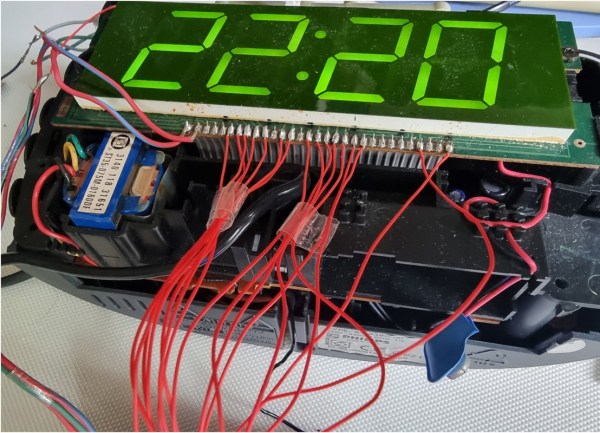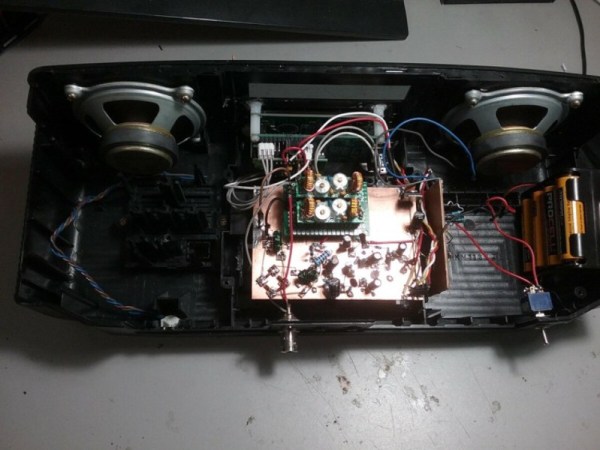Smart phones have taken the place of a lot of different devices especially as they get more and more powerful. GPS, music and video player, email, and of course a phone are all functions tied up in these general-purpose devices. Another casualty of the smart phone revolution is the humble bedside alarm clock as its radio, alarm, and timekeeping functionalities are also provided by modern devices. [zst123] has a sentimental attachment to the one he used in the 00s, though, and set about restoring it to its former glory.
Most of the issue with the clock involved drift with the timekeeping circuitry. Since it wasn’t accurately keeping the time anymore, losing around 10 minutes a day, the goal to save it was to use NTP to get the current time and a microcontroller to make the correction automatically. Rather than replace everything in the clock except the display, [zst123] is using the existing circuit board and adding an ESP8266 to grab the time from the Internet. A custom driver board reads the current time displayed on the clock directly from the display itself and then the ESP8266 can adjust it by using the existing buttons through a relay wired in parallel.
Using the existing circuitry was certainly a challenge especially since the display was multiplexed, but the LM8562 that came with these clock radios is a common and well-documented chip for driving displays like this, giving [zst123] a leg up over something unlabeled or proprietary. Using NTP is certainly a reliable and straightforward way of getting the current time too but there are a few other options for projects like these like using GPS or even a radio signal.
















